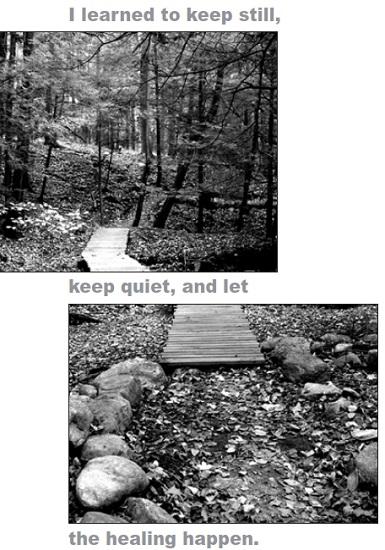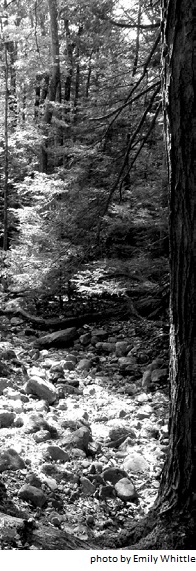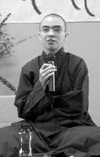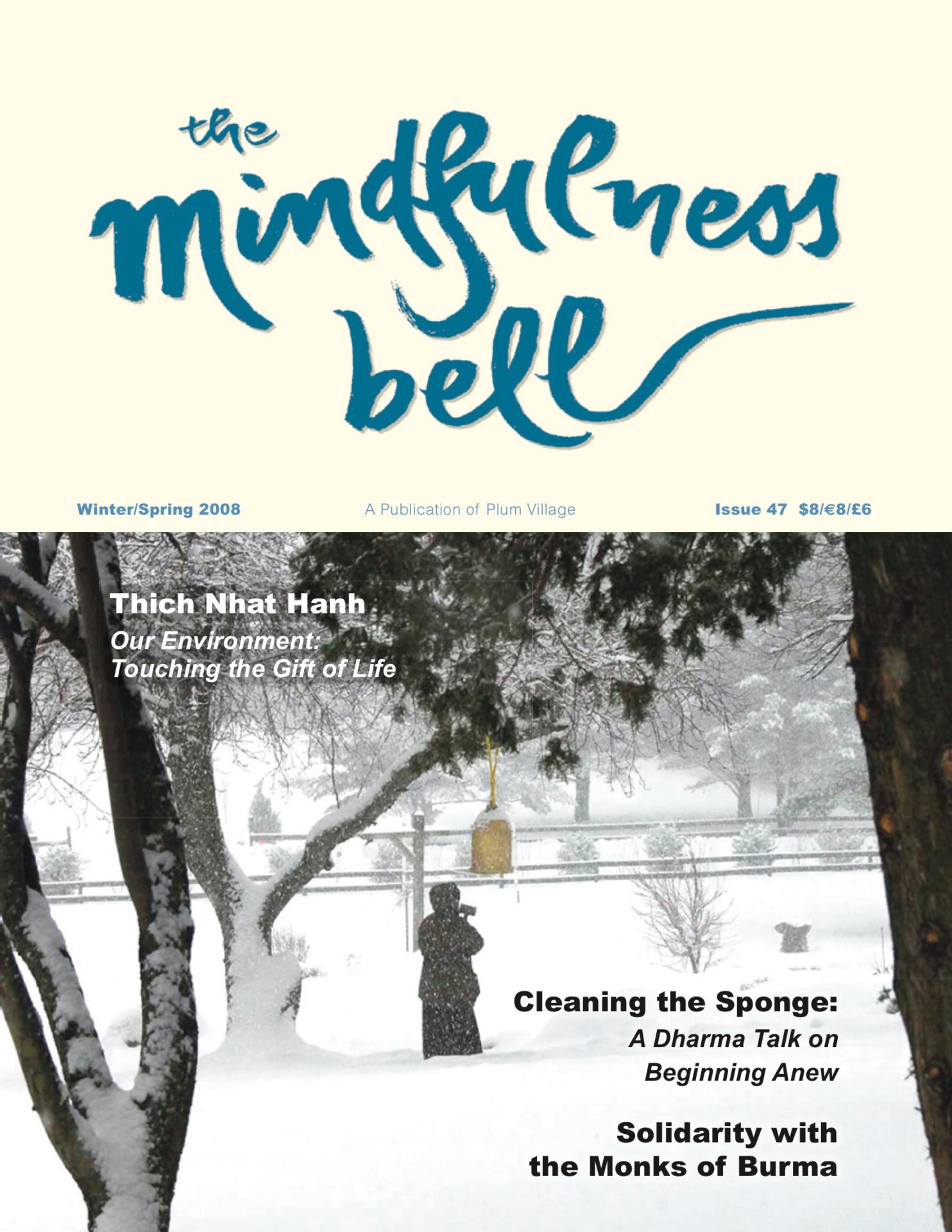By Sister Viet Nghiem
The first person with whom we need to practice Beginning Anew is ourselves. In this excerpt from the question-and-answer session at the monastic retreat in Estes Park in August 2006, Sister Viet Nghiem answers this difficult question from a lay retreatant: how can we look deeply at our suffering in a way that isn’t obsessive but instead transforms it?

When I came to Plum Village I had had a lot of trauma and I didn’t know how to deal with it.
By Sister Viet Nghiem
The first person with whom we need to practice Beginning Anew is ourselves. In this excerpt from the question-and-answer session at the monastic retreat in Estes Park in August 2006, Sister Viet Nghiem answers this difficult question from a lay retreatant: how can we look deeply at our suffering in a way that isn’t obsessive but instead transforms it?

When I came to Plum Village I had had a lot of trauma and I didn’t know how to deal with it. I lost my twin sister, I lost my dad; I went through a lot of violence when I was a child. But I didn’t know I had traumas. I thought my life was normal, but I wasn’t happy and I didn’t know why.
I felt a very deep sense of brokenness, and I didn’t know how to put the pieces back together. What really helped me was the Sangha and my teacher—their love, their complete embrace. Slowly, by doing the practice and being in a surrounding that is really protective, I can look inside myself at my own pace, and use the practice to heal myself. I’m not going to tell you that to heal traumas takes only one day. That didn’t happen with me; I’ve been living in this community for almost seven years. It’s not that I wanted every single day to heal my trauma, I didn’t push it, I just let it happen. Some people think, okay, I’m going to manifest this, I’m going to try really hard—[snaps finger]—and it’s going to work out. If it doesn’t work at the pace you think, you get disappointed.
I just let it happen. And I learned a lot. Some days it went really well, and some days it didn’t go so well because I had to learn. For me the main point about healing trauma was how much love I received from my brothers and sisters, and how much of the time they taught me how to love myself. To love oneself takes a lot of courage, because I had to face a lot of things I didn’t want to face. It’s hard to sit with myself when the feelings break, when I feel the sadness coming up and I feel overwhelmed. However, the learning you get back through the practice is immeasurable. I never get bored with learning the practice somehow.
Trauma as Teacher
When I look back, for a long time, since I didn’t know I had traumas and I didn’t know how much brokenness I had in my heart, I felt I was a victim. I behaved like a victim, I thought like a victim. Because I didn’t know how to embrace and recognize my feelings and emotions, I became a victim of myself, basically. With the support of the Sangha and the practice, I learned to keep still, keep quiet, and let the healing happen—slowly, deeply. After a while I realized that all these traumas were really good teachers.
I shared during the dharma discussion that I don’t like talking about happiness, gratitude, and love because I don’t take them as things I can share openly. For me they are very intimate feelings and I share them very rarely. I tend to keep them for myself. I don’t think I would appreciate my happiness, gratitude, and love the same way if I didn’t have any traumas in my childhood. There is always something to learn from situations, but at the beginning it’s difficult because emotions and feelings overwhelm me. They really feel like a tidal wave. There’s no way you can run away or escape. Things that happened in my childhood, I mean, I lost my dad to suicide, I lost my twin sister—it’s really hard. I have a lot of loneliness and despair, and a lot of things going on in my mind—less now. But I see the value of these lessons and these events.
It takes a lot of practice and a lot of courage, but it’s not useless. It’s hard, I’m not going to hide that, but it’s not useless.

There is always something to learn. Once I got the lessons and I grew in loving myself and being more responsible, it’s easier to relate with people.
I learn from despair, for instance. I can have a lot of despair, thinking that my life is useless, until one of my friends and other brothers and sisters come to me and say, “Look, look how much you’ve done! You can help people change their lives because you changed your life.” I learn from sadness. I feel sad when I’m not capable of letting go. I learn from anger. Anger teaches me that I have limits, and sometimes I’m not capable of setting my limits, so I feel angry. I learn from loneliness, how to connect better to myself and others. But if I feel that all these things are just there to bug me, to bother my life, forget it. I’m just going to stay stuck and I don’t get the lesson. So when there are things coming up like that, and I look at my life, I see there’s always something very valuable to learn, and things are not just given to harm us.
Suffering is hard. But now I can say, I don’t have regrets. I don’t think it was a waste of time. But it takes practice. It takes being committed to a community of practice, to observing, embracing, not giving up even though really you want to give up.
Some Healing Practices
Walking meditation and Touching the Earth can be wonderful practices to come back to oneself, and stop our mind, and that nourishes us. One thing that really helped me was to read and write. I do a lot of writing. I like walking a lot, I can connect to that very much. I like singing and chanting. Anything that keeps me centered, no matter what the storm is. I have to stay mindful and keep centered. Once the emotions pass it’s easier to see; the clarity is there.
I found that eating my meals in mindfulness also helped me heal the traumas, to nourish my body in mindfulness. I realized that having all these traumas made my heart and my body very sensitive. I sit quietly and enjoy a meal, really take my time to chew my food, swallow, and really feel the food coming right into my stomach. Once it’s in my stomach I can take another mouthful. You go slowly, take it easy, go gently.

And the last point is, when I was a teenager I felt so broken and sensitive, that anything felt like it was being too hard on me. I didn’t know how to be gentle with myself. That’s something I learned from my brothers and sisters, to be gentle with myself — when I take a shower or when I take a bath, when I put on my clothes, when I eat, when I drink, the way I think about myself. There’s a lot of things I have to change. We cannot change the world, but we can change our self. It’s hard, but it’s possible.
Sister Viet Nghiem, Sister Transcendence, grew up in France and now lives at Deer Park.

